
By futureTEKnow | Editorial Team
Picture this: a world where machines don’t just follow orders but think, learn, and decide like us. Crazy, right? Yet, that’s exactly where we’re heading, thanks to the wild ride of the global AI market. This isn’t some slow crawl—it’s a full-on sprint. Recent numbers from Statista show the AI market size projections soaring to around 244 billion U.S. dollars in 2025 and is expected to grow well beyond that to over 800 million U.S. dollars by 2030.. That kind of AI market growth isn’t just impressive; it’s the kind of thing that makes you sit up and pay attention.
What’s fueling this explosion? It’s not just tech geeks tinkering in labs. AI technology adoption is hitting the ground running across industries that touch our everyday lives. In healthcare, AI’s changing the game—think faster diagnoses and smarter patient care. Over in the automotive world, self-driving cars are no longer a pipe dream; they’re rolling out, powered by AI that’s getting sharper every day. And in finance, algorithms are sniffing out fraud in real time, saving companies billions.
But here’s where it gets really interesting. Looking at artificial intelligence trends for 2025, we’re on the cusp of some mind-blowing shifts. Take natural language processing—yeah, the tech that lets machines chat like humans. It’s getting so good, you might not even know you’re talking to a bot soon. That’s huge for customer service, virtual assistants, or even writing stuff like this. Then there’s edge computing, where AI processes data right where it’s made—like in your car or a factory—making everything faster and slicker. These trends aren’t just cool; they’re about to rewrite how we live and work.
It’s not all smooth sailing, though. The AI market growth is sparking a mad scramble for talent—there just aren’t enough experts to go around, pushing companies to train their own. Plus, while AI’s creating jobs, it’s also shaking things up, automating tasks we used to do ourselves. Sound scary? Maybe, but history says tech like this ends up opening new doors, even if it rattles a few cages along the way. And let’s not skip the big stuff: ethics. As AI digs deeper into our lives, questions about privacy, bias, and who’s accountable are popping up. The global AI industry forecast isn’t blind to this—governments and businesses are already sketching out rules to keep things fair and trustworthy.
So, why should you care? Because this AI wave is coming for all of us—whether you’re running a business, geeking out over tech, or just wondering what’s next. The possibilities are endless: personalized medicine, smarter cities, you name it. The global AI market’s remarkable evolution isn’t some distant headline—it’s happening now, and it’s packed with chances to get ahead or just understand the world that’s unfolding. Want the full scoop on how this growth, these trends, and those forecasts will shape tomorrow? Stick around—we’ve got the details waiting for you.
The current AI industry is buzzing with energy, reshaping how we live and work in ways that feel both futuristic and immediate. To get a handle on this whirlwind of innovation, let’s dig into what’s driving it, how big it’s gotten, and who’s leading the pack.
So, what exactly powers the AI market today? It’s a cocktail of groundbreaking technologies—think machine learning, computer vision, and automation. Machine learning is the brain behind systems that get smarter over time, sifting through data to spot patterns without needing a human to hold their hand. Computer vision lets machines “see” the world, whether that’s recognizing faces in your phone or catching defects on a factory line. Then there’s automation, quietly revolutionizing everything from chatbots that handle your customer service woes to robots assembling cars. These aren’t just techy buzzwords; they’re the fuel propelling artificial intelligence today into every corner of our lives.
Let’s talk scale. The AI market size is jaw-dropping—according to Statista, this isn’t a fluke—the global AI industry forecast backs it up with a compound annual growth rate (CAGR) of 27.67% between 2025 and 2030. That’s not just a big number; it’s a signal of AI’s heavyweight status in the global tech scene. To put it in perspective, this valuation is starting to flex its muscles alongside giants like cloud computing and cybersecurity. It’s a clear sign that AI isn’t some niche experiment anymore—it’s a cornerstone of how the world runs, with cash and ambition pouring in from every direction.

Some industries are sprinting ahead in the AI race, and they’re worth watching:
The global AI market is a wild ride right now—big, bold, and brimming with possibility. Whether it’s the tech powering it, the dollars backing it, or the pioneers pushing it forward, one thing’s clear: AI’s evolution is happening right here, right now.
The global AI market is charging into the future at a pace that’s hard to ignore. What was once a niche field has exploded into a cornerstone of modern technology, reshaping industries and redefining what’s possible. Let’s break down the numbers, the trends driving this surge, and the challenges that might trip it up—because this isn’t just growth; it’s a full-on transformation.
If you’re looking for proof of AI market growth, the numbers don’t lie. According to Statista, this robust growth trajectory is anticipated to propel the market’s total value to an impressive US$826.73 billion by the end of the decade. That’s not just a forecast; it’s an artificial intelligence forecast that signals AI’s deepening roots across every corner of the global economy. Whether you’re in tech, healthcare, or retail, this kind of expansion means one thing: AI isn’t a trend—it’s the future.
So, what’s powering this runaway train? A handful of AI trends are steering the ship, and they’re as exciting as they are impactful:
These developments aren’t just buzzwords; they’re the engines pushing AI into every industry imaginable. And as they gain steam, the ripple effects are only going to get bigger.

But it’s not all smooth sailing. The future AI market has some serious hurdles to clear:
Here’s the silver lining, though: these aren’t just problems—they’re opportunities. Regulations could spark a wave of ethical, transparent AI innovations that win trust and open new doors. And that skills gap? It’s already pushing universities and companies to pump resources into training programs, setting the stage for a fresh crop of AI experts. Challenges like these don’t stop progress—they sharpen it.
The AI market isn’t just growing—it’s morphing into something massive, fueled by a handful of powerful forces. These AI market drivers are the engines behind its rapid rise, pushing innovation and rewriting the rules across industries. So, what’s lighting this fire? It boils down to three big pillars: a flood of funding, game-changing tech advancements, and some serious economic ripples. Here’s how they’re shaping the AI landscape.
First up, let’s talk cash. The artificial intelligence investment scene is on fire, with venture capitalists and tech titans like Google, Microsoft, and Amazon dumping billions into AI projects. Investment in AI-focused enterprises surged dramatically in 2024, with Crunchbase data revealing a record-breaking influx of capital exceeding $100 billion. This represents a staggering increase of over 80% compared to the previous year’s $55.6 billion. The AI sector’s funding in 2024 not only outpaced every other year in the last decade but also surpassed the pinnacle of global funding witnessed in 2021.
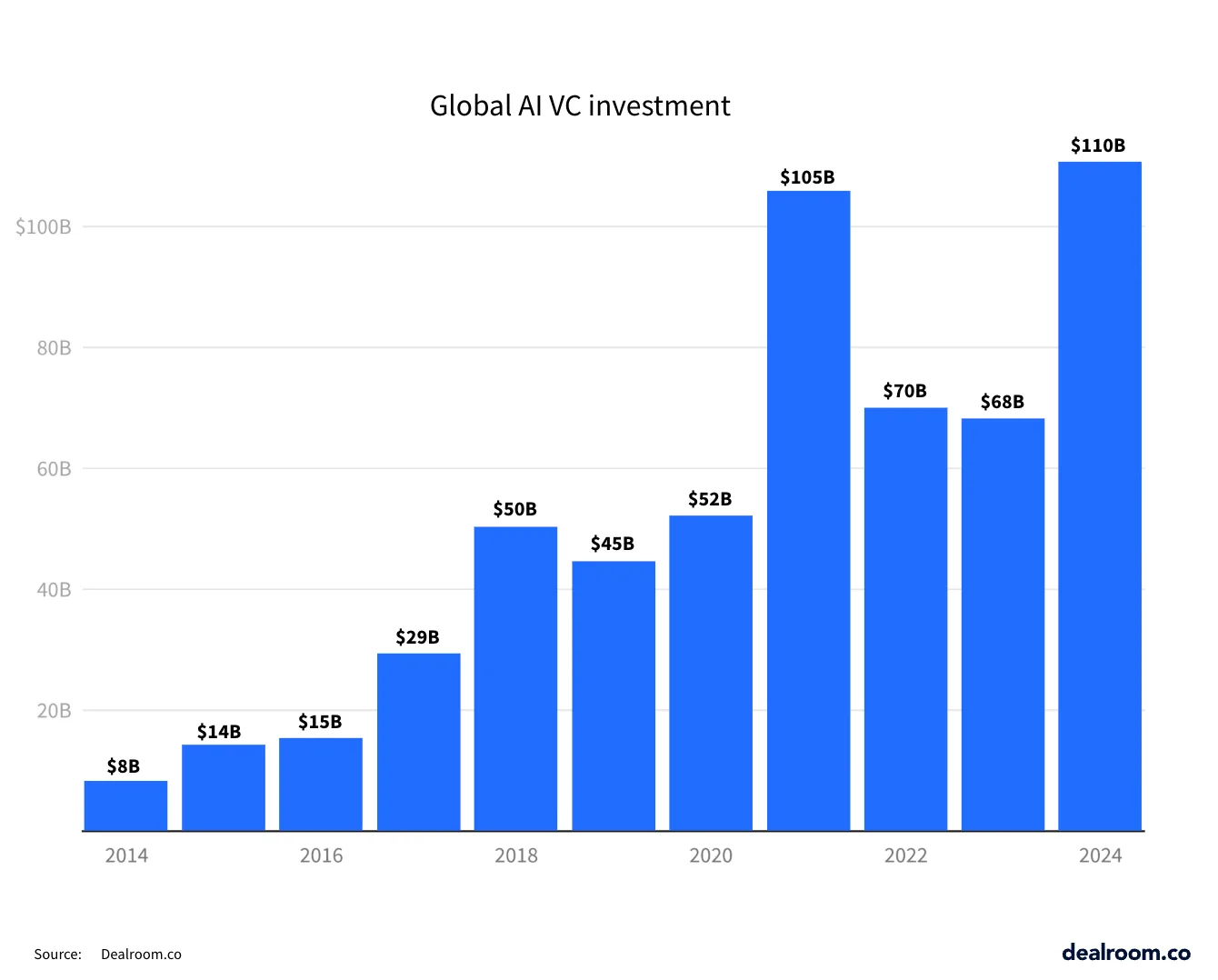
That’s not just a number—it’s a tidal wave accelerating research and deployment. Startups are cashing in, building everything from self-driving cars to AI tools that speed up drug discovery. Meanwhile, the big players are betting heavy on AI to keep their edge. It’s a money-fueled race, and it’s speeding up how fast AI lands in our lives—think smarter apps, better healthcare diagnostics, you name it.
Funding’s only half the story. The real juice comes from AI technology trends that are evolving at warp speed. It starts with raw power: GPUs and custom AI chips are crunching data faster than ever, turning what used to take days into mere seconds. Then there’s the data explosion—IoT gadgets, social feeds, and sensors are churning out mountains of info, and AI’s eating it up, getting sharper with every byte. Add in slicker algorithms—think deep learning and neural networks—and you’ve got systems that can translate languages on the fly or recognize faces with spooky precision.
These aren’t just lab tricks; they’re unlocking AI’s potential in fields like finance, logistics, and even creative arts. Tech’s the spark, and it’s igniting possibilities we couldn’t dream of a decade ago.
Now, let’s zoom out to the big picture. The AI economic impact is shaking things up worldwide, and it’s a mixed bag. On the plus side, AI’s a job machine—by 2025, it could spark 97 million new roles, from data wranglers to AI ethics experts, according to the World Economic Forum. But it’s also flipping the script on work, automating jobs in places like factories and call centers. That’s got people talking about reskilling and adaptation.
Plus, there’s the messy stuff: biased algorithms, privacy headaches, and who’s on the hook when AI screws up. These aren’t side issues—they’re shaping laws, public opinion, and how much we trust this tech. Still, the upside’s huge—AI’s poised to juice productivity and innovation, rewriting how economies tick.
So, there you have it. The AI market’s transformation is riding on a wave of funding, tech breakthroughs, and economic shifts. These AI market drivers aren’t just trends—they’re the foundation of a future that’s already unfolding. With money flowing, tech advancing, and societies adjusting, AI’s evolution is picking up speed. Buckle up—we’re in for a wild ride.
Artificial intelligence is today the real force changing how businesses operate every day. As we’ve explored in this post, the AI business benefits are hard to ignore, touching everything from efficiency to innovation. It’s not about replacing humans; it’s about amplifying what we can do when we let smart tech take the wheel on the right tasks.
So, what’s the takeaway? AI’s already proving its worth across industries, and it’s only getting smarter. The businesses jumping on board now—whether to cut costs, sharpen decisions, or streamline operations—are setting themselves up to lead the pack. If you’re curious about what AI could do for your own work, don’t just sit there. Dig into it, experiment a little, and see where it takes you. The future’s wide open, and AI’s handing us the keys.
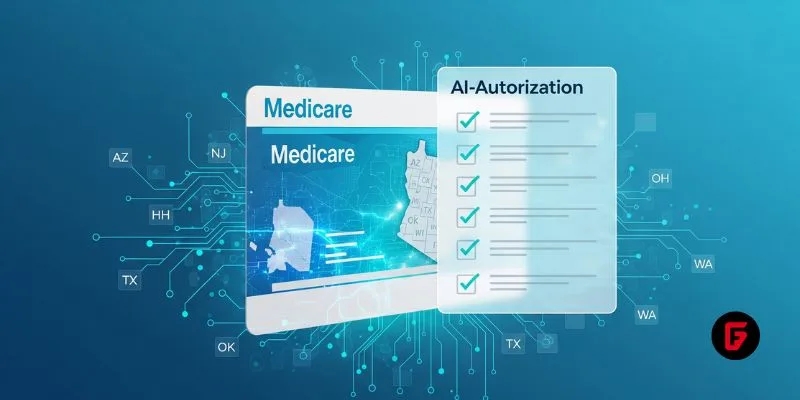
Traditional Medicare will pilot AI-assisted prior authorization in 2026 across six states, focusing on high-risk outpatient services. Clinicians retain final say, but incentives and access concerns loom as CMS tests fraud reduction and “gold card” exemptions. Here’s what providers and patients should know.

OpenArt’s new “one-click story” compresses scripting, visuals, and edits into ready-to-post short videos—fueling viral growth and a fresh IP debate. We break down how it works, adoption signals, what’s next (multi-character, mobile), and practical guardrails creators and brands should follow to stay original and compliant.
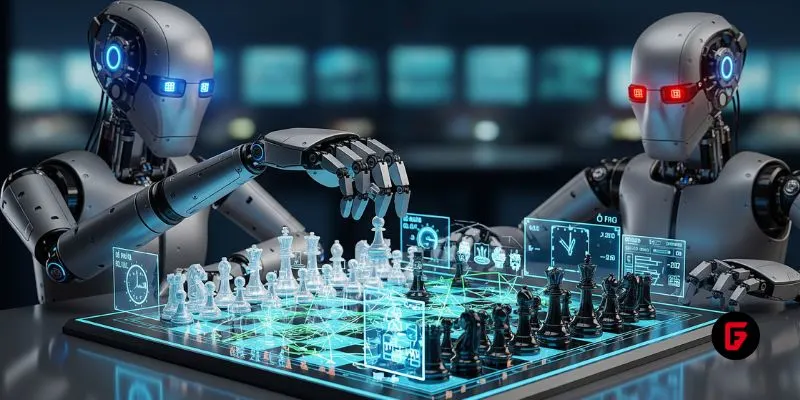
OpenAI’s o3 swept the Kaggle AI chess tournament, defeating xAI’s Grok 4–0. The victory fueled the intense rivalry between Altman and Musk, reshaping AI benchmarks.

Pinterest’s CEO confirms that fully agentic AI shopping is years away, as the platform invests in AI-powered tools to enhance discovery, inspiration, and personalized shopping experiences for millions.
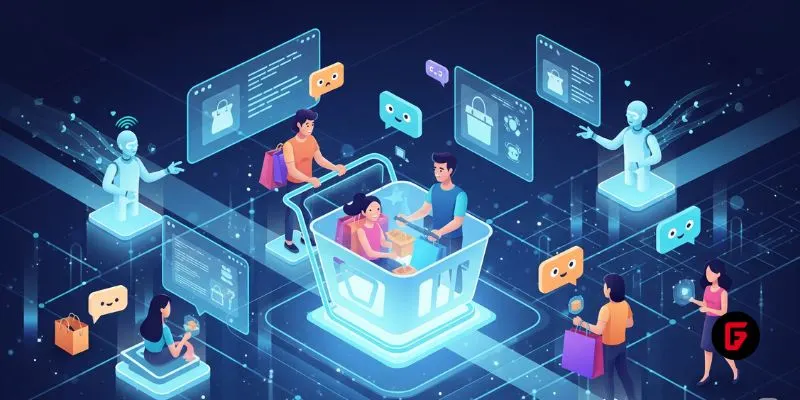
Shopify’s new AI shopping tools are transforming e-commerce, letting agents and chatbots deliver smooth, personalized shopping and checkout experiences across platforms. Learn how these innovations reshape online retail.
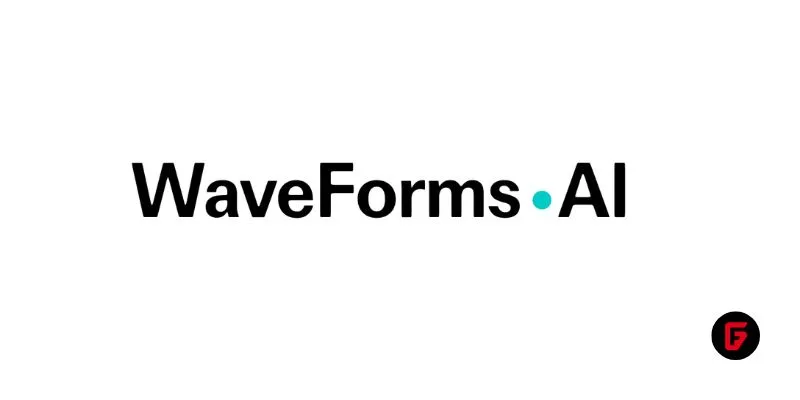
Meta has acquired WaveForms AI, a startup pioneering emotion-detecting voice technology. Learn what this means for Meta’s AI voice ambitions and the future of AI audio.
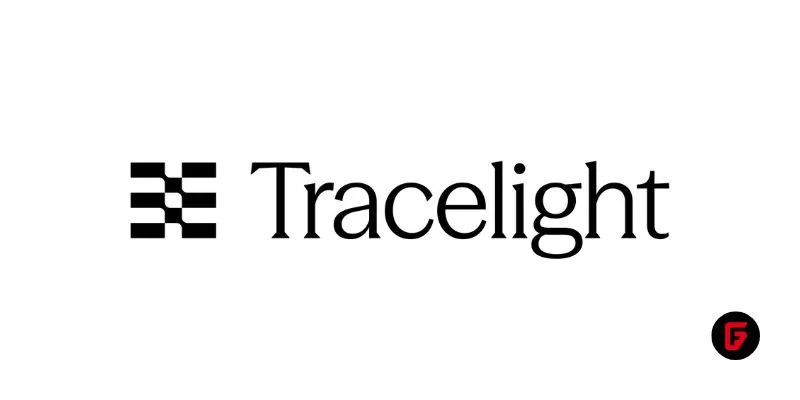
Tracelight is revolutionizing financial modelling for finance professionals with AI-powered Excel tools that automate complex tasks, reduce errors, and unlock new analysis capabilities. Learn how this next-gen solution changes the future of spreadsheets.

Microsoft rolls out GPT-5 across its Copilot suite, integrating smarter AI for enterprise and personal users. Discover new features, free access, and what sets this launch apart.
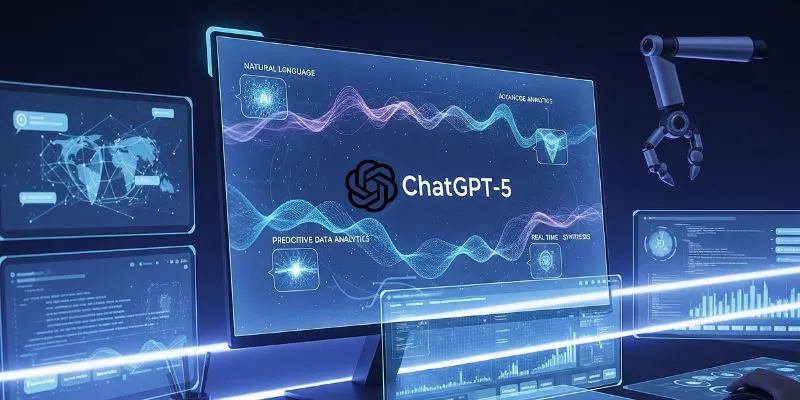
OpenAI’s GPT-5 is now live for all ChatGPT users. It brings faster, smarter AI with improved reasoning, expanded context, and safer outputs—marking a major leap in generative technology.

Chai Discovery’s $70M funding ushers in a new era for AI-powered antibody design, promising faster, more successful drug discoveries with its breakthrough Chai-2 model.

Discover how Google’s Gemini generative AI is revolutionizing Android—making your phone smarter, faster, and truly personal with next-gen features and privacy-first innovation.
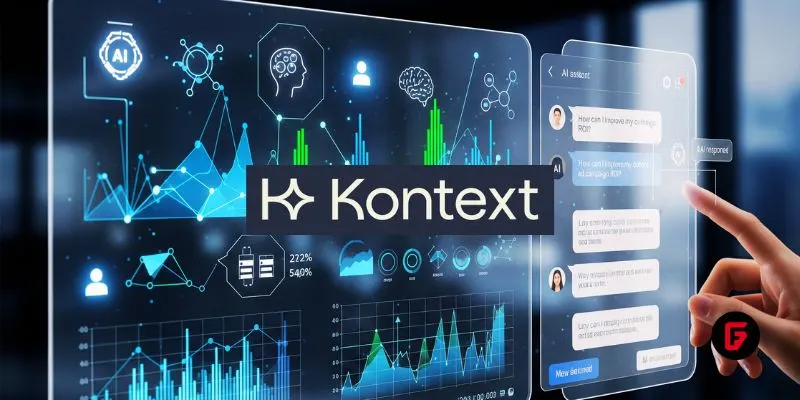
Kontext lands $10M seed round to fuel its generative AI advertising platform, enabling brands to deliver personalized, context-rich real-time ads in AI applications and chatbots.
To provide the best experiences, we use technologies like cookies to store and/or access device information. Consenting to these technologies will allow us to process data such as browsing behavior or unique IDs on this site. Thanks for visiting futureTEKnow.